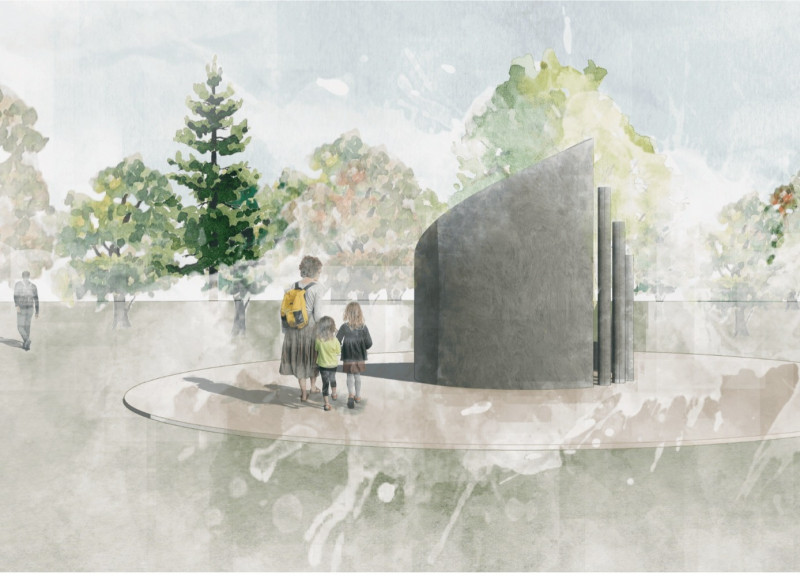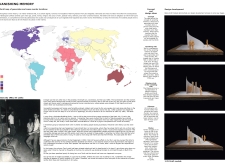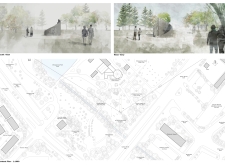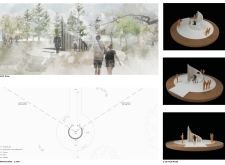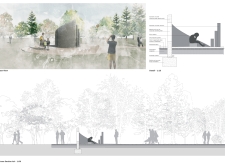5 key facts about this project
At its core, the "Vanishing Memory" project symbolizes the notion of memorialization, illustrating how architecture can play a crucial role in preserving the legacies of individuals who have suffered through violent histories. The project consists of several interconnected elements that guide visitors through a journey of remembrance. One of the primary features is the aptly named "Vanishing Wall," which stands as a physical manifestation of the erasure of identities lost to violence. The wall functions not only as a structural element but also as a reflective surface, inviting visitors to consider the memories that fade with time. Its design encourages engagement from all angles, allowing for a contemplative interaction with the space.
Adjacent to this wall, the "Missing Circle" serves as another important feature of the design. This circular space symbolizes the void left in communities by these tragic events, providing an area for reflection and gathering. The circular form creates a welcoming environment, suggesting unity and communal memory while evoking the grief that accompanies loss. The design team utilized varying heights and arrangements of columns within the memorial to represent individual lives lost during the genocide. This dynamic configuration highlights the significance of personal and collective identities, visualizing the deep connections between those who suffered and the communities they have left behind.
In terms of materiality, the project incorporates exposed concrete, reinforcing the permanence associated with memorials while also providing a tactile quality that connects the structure to its landscape. Granite is used in the circular base, symbolizing grounding and stability, while geotextile fabric supports sustainable drainage, integrating environmental considerations into the design. Reinforced concrete ensures the structural integrity of key components, while other stone finishes add depth and richness to the memorial's aesthetic.
What sets the "Vanishing Memory" project apart is its unique design approach that emphasizes interaction and dialogue among visitors. By promoting movement through the space and fostering engagement with the architectural elements, the design provides an opportunity for shared experiences and reflections on collective grief and social justice. The inclusion of a statue dedicated to Tamil struggles during the Black July events serves as a focal point, reinforcing the need for acknowledgment of suffering while providing a site for educational opportunities regarding the history and impact of these events.
This architectural endeavor ultimately serves as a vital platform for remembrance and learning, successfully intertwining personal and communal narratives into the structural fabric of the design. The thoughtful integration of symbolism and materiality conveys the message of memory preservation, urging future generations to recognize the importance of understanding their history. For those interested in exploring this project further, it is recommended to review the architectural plans, architectural sections, architectural designs, and architectural ideas presented in the project documentation to gain a deeper appreciation for the creative and conceptual foundations that underpin this meaningful memorial.


